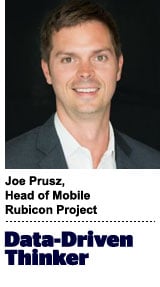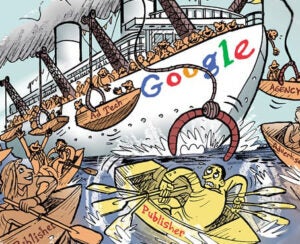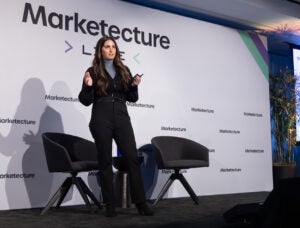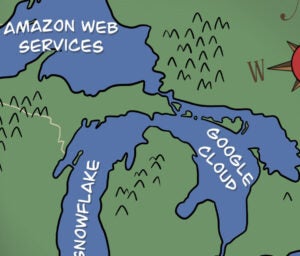 “Data-Driven Thinking” is written by members of the media community and contains fresh ideas on the digital revolution in media.
“Data-Driven Thinking” is written by members of the media community and contains fresh ideas on the digital revolution in media.
Today’s column is written by Joe Prusz, head of mobile at Rubicon Project.
In 2013, many observers marveled at the growth in mobile users. If 2013 was the year of mobile adoption, mobile advertising moved from promise to reality in 2014.
We witnessed the maturation of the mobile ecosystem this year. In the past few weeks alone, Black Friday mobile sales were responsible for 28% of total online sales. PayPal reported a record-breaking Black Friday with mobile payments up 62% from 2013. Meanwhile, consumers are spending an average of 34 hours per month browsing the mobile web on smartphones, outstripping desktop by more than 20%.
As we move into 2015, we can expect another year of accelerated change for mobile. I see three shifts taking place next year as mobile advertising continues to adapt.
Automation Will Elevate Premium Niche Inventory
With the acceleration of mobile adoption over the past few years, we have seen an explosion of new apps introduced to the marketplace. While some have achieved significant success and global growth, such as Pandora, Zynga, Supercell and King, small teams continue to operate and manage the vast majority without direct sales forces to drive inventory sales.
For publishers and application developers, mobile private marketplaces and automated guaranteed will transform the way that mobile ads will be bought and sold. Large-scale app developers have adopted private marketplaces and automated guaranteed solutions because they have embraced the value they offer. The broader adoption of this technology by the app industry means buyers can more easily access the myriad sources of premium niche inventory available from applications globally.
This shift will literally create billions of new opportunities to engage consumers on mobile in the months ahead, providing greater revenue for sellers while also providing deeper access to hypertargeted audiences via a simplified and streamlined process for buyers.
Improved Ad Experience Will Fuel Growth
It’s clear that transferring the desktop banner ad model directly to mobile was only the first step in the evolution of mobile advertising. Rapidly accelerating usage and deeper user sophistication has fueled a demand for significant advances in how we engage audiences with advertising on mobile.
The future in mobile engagement will be shaped by how native advertising innovations collide with mobile’s scale. The improved experience will lead to better performance than traditional banner ads, ultimately fueling greater investments from brands. Already, 57% of digital ad buyers report they plan to run mobile native ad campaigns in 2015.
With this potential, publishers and application developers will see monetization opportunities increase vastly with their ability to sell more valuable, high-performing ad inventory to advertisers while delivering improvements in the overall experience for the consumer. It’s a perfect pairing connecting consumers with greater and more relevant content and advertisers with deeper consumer engagement.
Data Drives Everything
The walls separating data insights between desktop and mobile usage have already begun to crack. I believe that in 2015, marketers seeking deeper insights and publishers and app developers pursuing greater monetization capabilities will tear them down completely.
While the industry moves to break down silos and becomes more sophisticated in ensuring it reaches consumers regardless of their location or device, the richness of the data insights available will advance significantly. As advertising becomes more of a consistent and complementary experience across devices, there will be more opportunities for cohesive brand storytelling as we seamlessly engage consumers from their desktops to their tablets and smartphones.
Being able to match users with their devices will shift the industry’s current device-centric mentality to a consumer-centric one, providing a more engaging experience that ultimately benefits the consumer and the entire industry. In effect, the ability to engage audiences from a single advertising platform will become less of a desire and more of a directive.
I believe that in the next 12 months, the growing number of mobile users, combined with their shifting behavior, will align just as the advertising space matures to offer sophisticated and scalable solutions. 2015 will bring with it the perfect storm of usage, technology and opportunity to drive another breakthrough year for mobile.
Follow Joe Prusz (@JoePrusz), Rubicon Project (@RubiconProject) and AdExchanger (@adexchanger) on Twitter.












